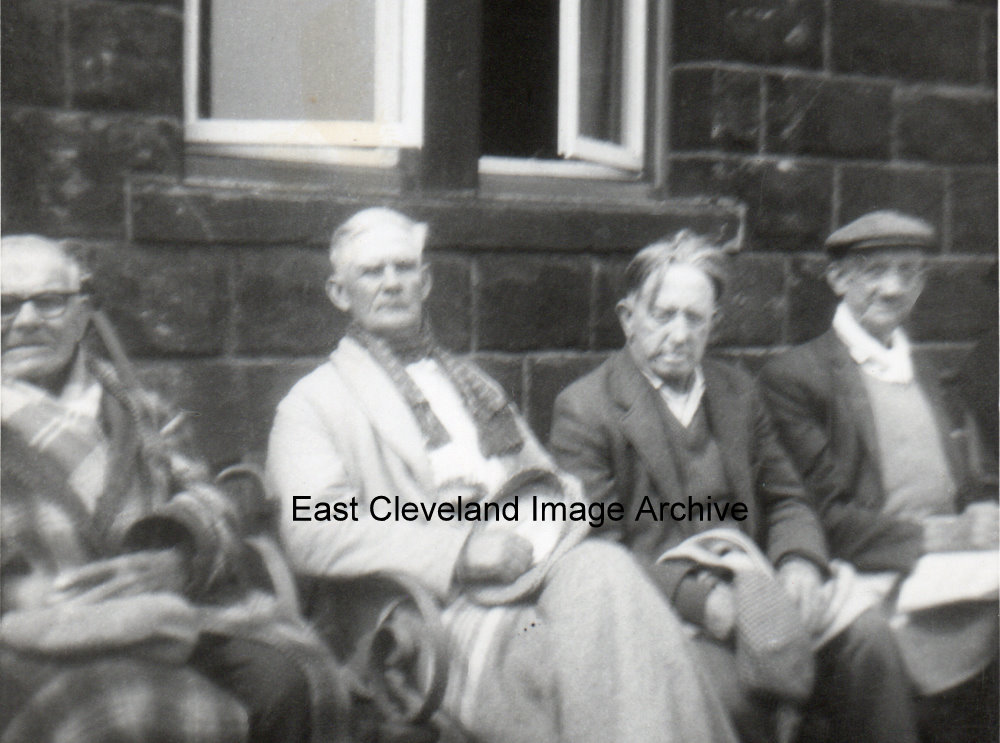
Patients of Brotton Hospital taking the air are (left to right): Mr Robert Holliday, Mr Pickney, ??, ??. There were very few care homes; the infirm and those unable to care for themselves lived at the hospital.
Image courtesy of Marjorie Magor.
|
|
||
 Patients of Brotton Hospital taking the air are (left to right): Mr Robert Holliday, Mr Pickney, ??, ??. There were very few care homes; the infirm and those unable to care for themselves lived at the hospital. 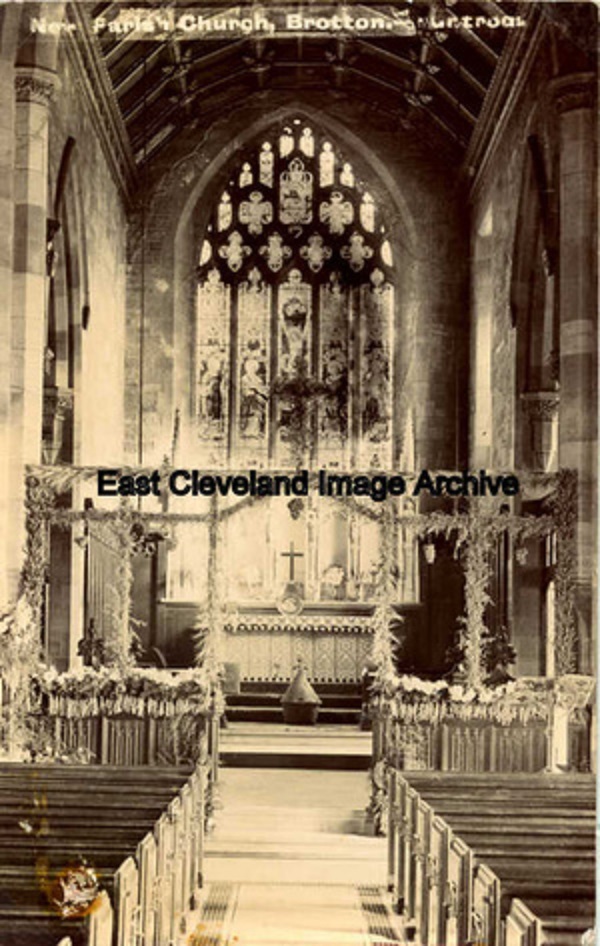 A postcard by Huntrods of Brotton, the inside of St Margaret’s church and by the look of it all dressed for harvest festival. 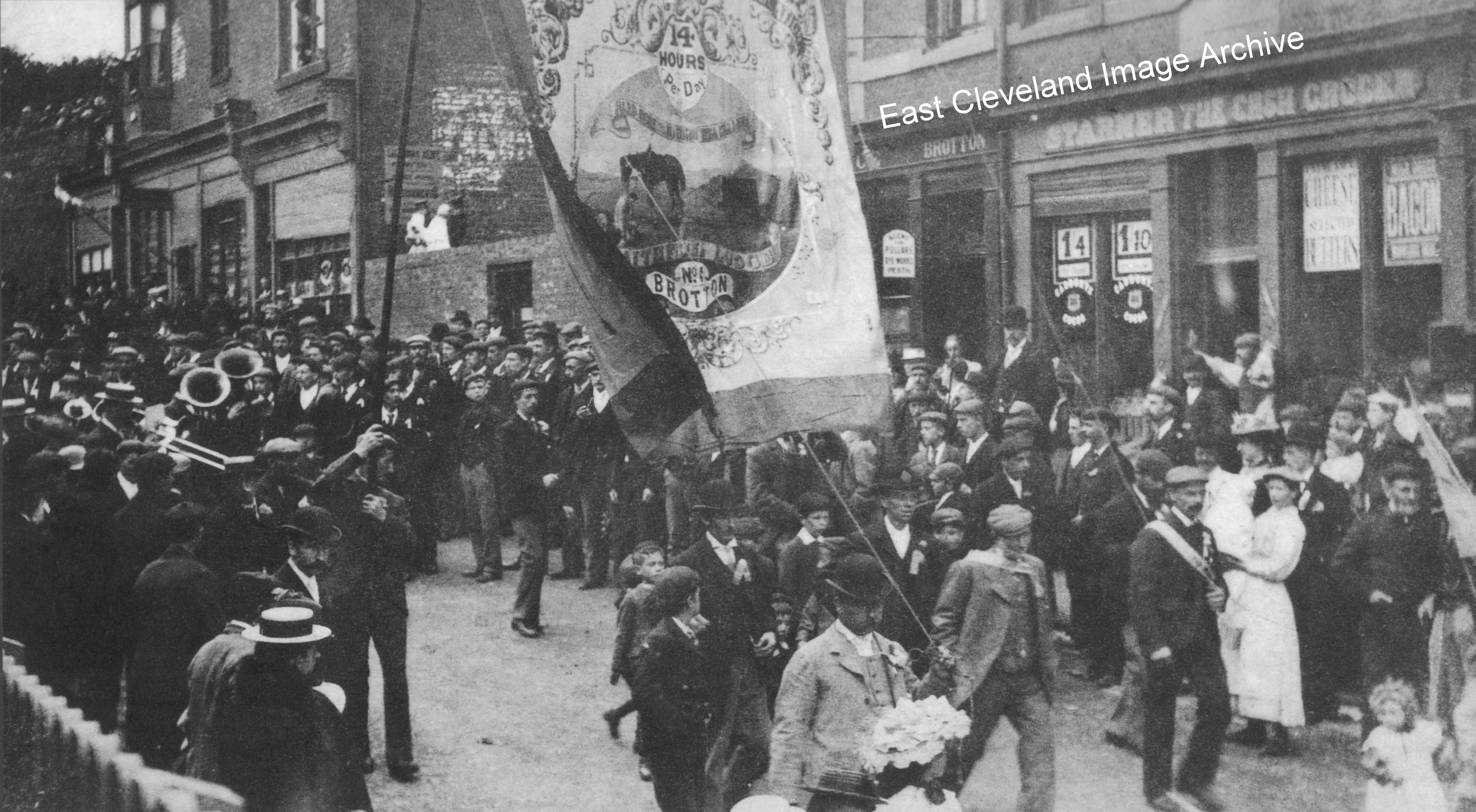 This photograph of a parade with the North Yorkshire and Cleveland Miners’ Union banner down Brotton High Street in 1908, shows the No.1 Faithful Lodge (Brotton). The original image came to the Archive in 2010, however the Archive is indebted to Chris Twigg for the provision of a much improved image. It is interesting to note that the building which presently houses the Fine Food Outlet, Handy Pearson Property Services and R. A. Howard & Sons is incomplete; otherwise the High Street buildings remain very similar to this day. Image and information courtesy of Mrs. L. Johnson and Chris Twigg. 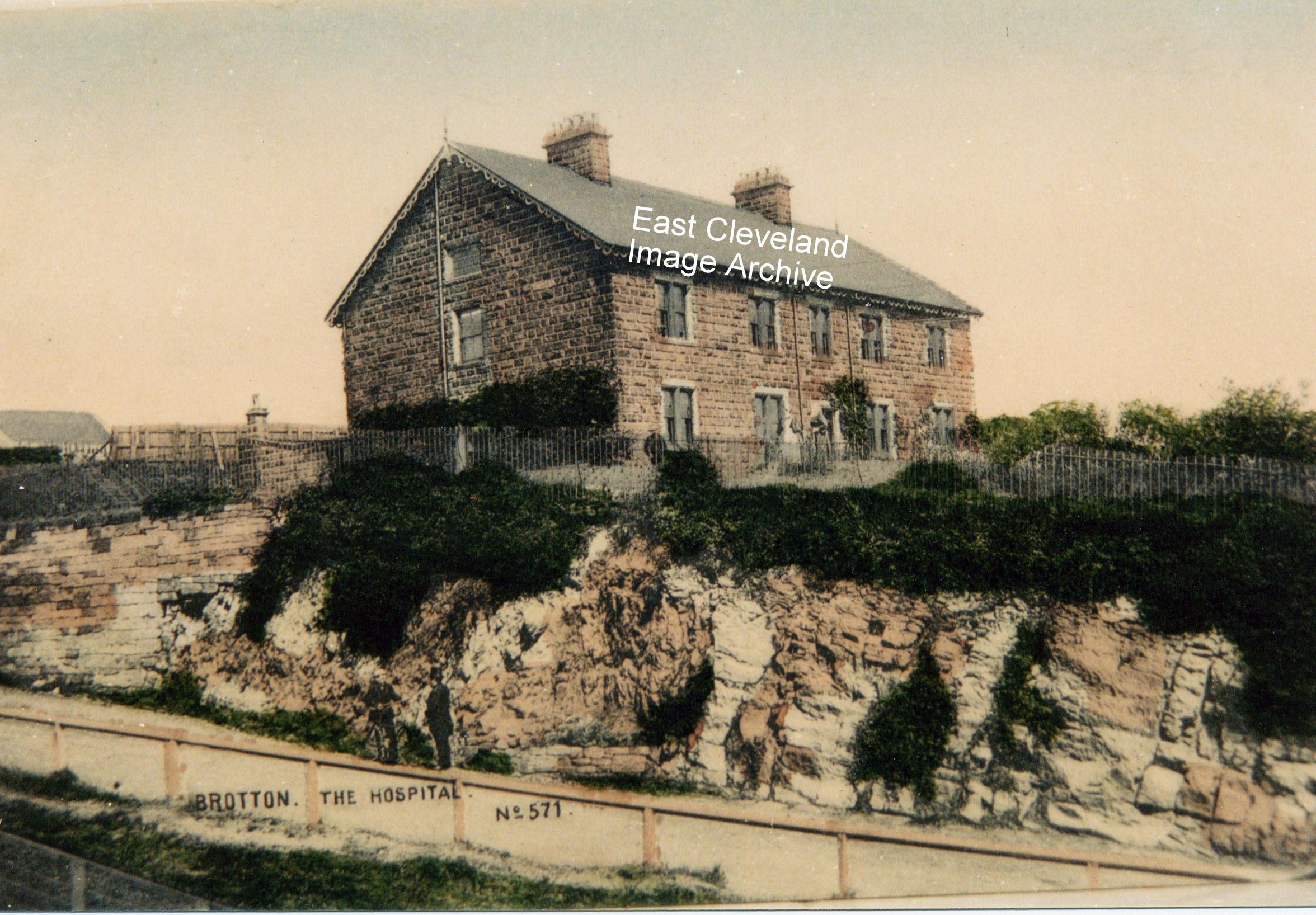 A lovely tinted photograph of the cottage hospital at Brotton as it used to be. Very early days by the look of the dress of the man standing just below the hospital. 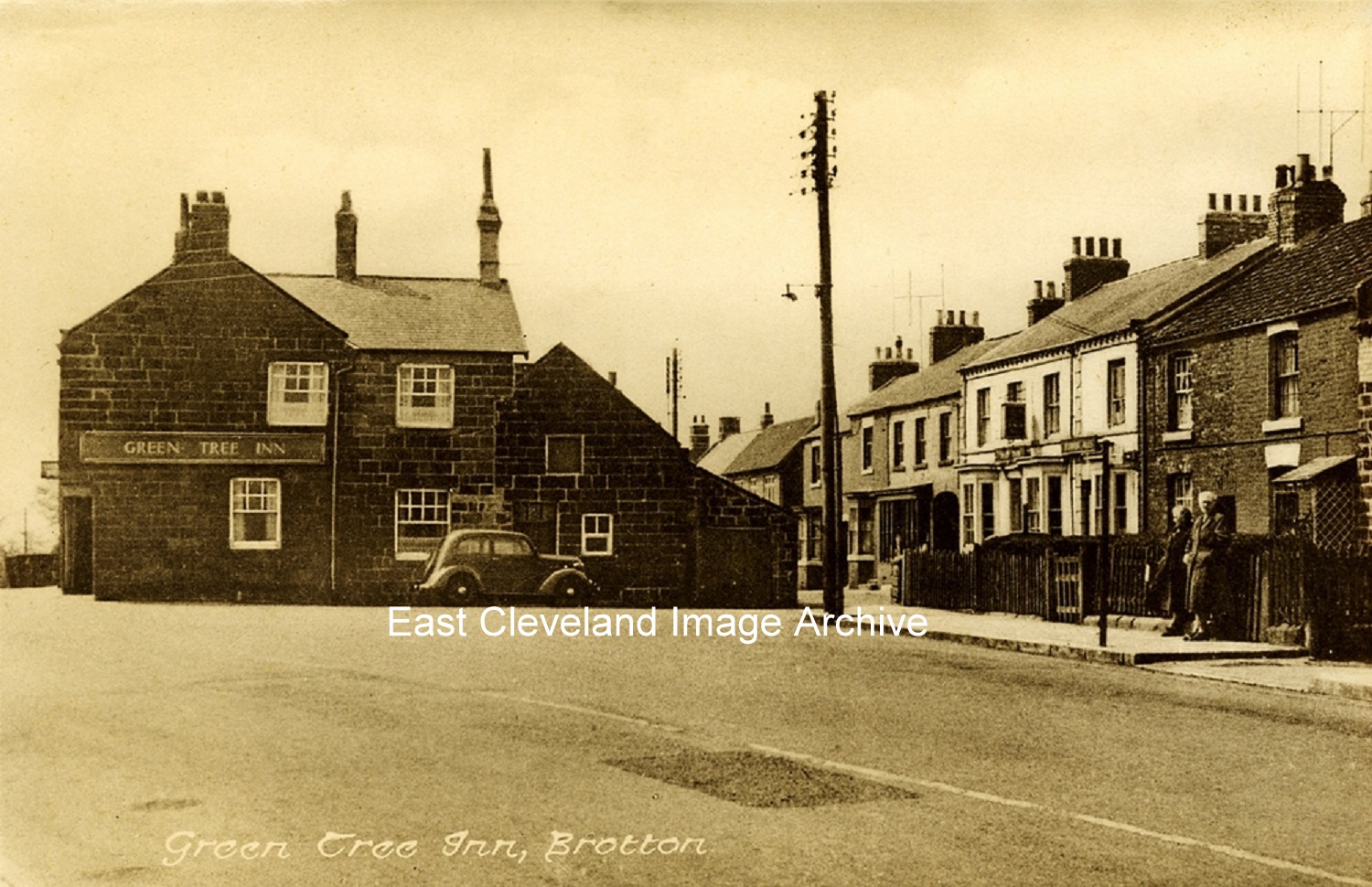 The Green Tree at Brotton, believed to be from the 1950’s. Pamela Mcvay tells us: ”We used to live on Lorne Terrace (out of shot here,) I remember the shops behind the Green Tree and at the end of Lorne Terrace was a dairy selling milk and orange juice in bottles. Not sure if this might be very early 1950s”. Gary Wilson also tells us: ”I can also remember the shops behind the Green Tree; the Co-op and Ruddock’s butchers on the corner and Ada Bell in the dairy.” Whilst Patsy Gallon has memories: “I remember going to Ada’s when we visited my gran, Elsie Rogerson. She lived on the High Street. My mum had the hairdressers in approximately late 1940’s – 1950’s. I believe it is still a hairdressers today.” Alison Yarushin enquires: “Can anyone tell me which modern day building is the site of where Ruddock’s Butchers shop was? I am related to the Ruddock’s who owned the shop, and have some photograph from the 1930s of people standing on the doorstep of the shop.” Image courtesy of Ray Brown; thanks to Pamela McVay, Gary Wilson, Patsy Gallon and Alison Yarushin for the updates. 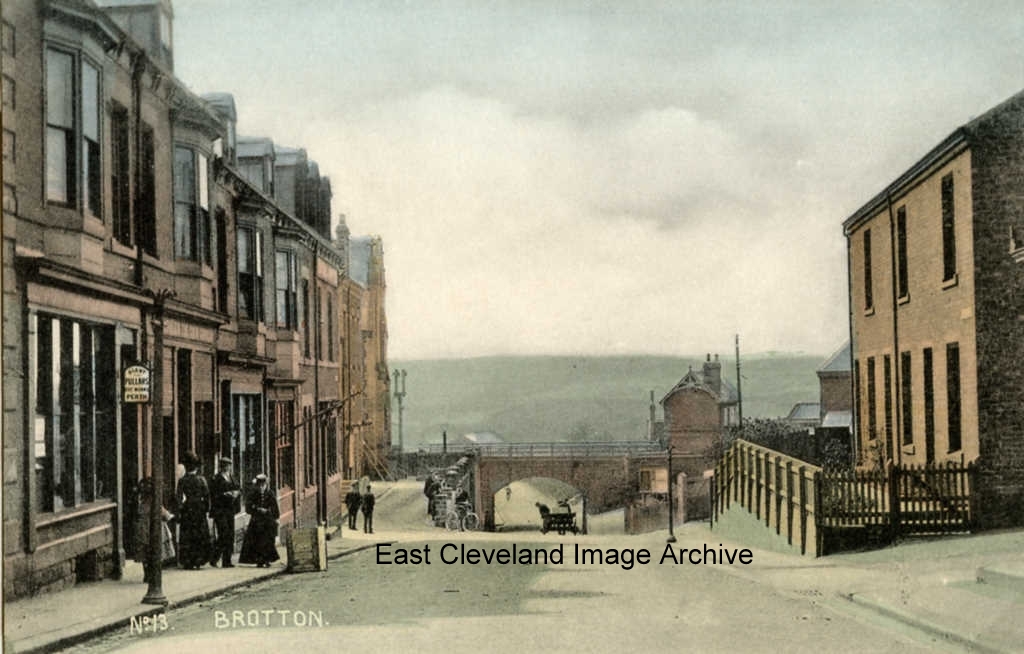 Our Phoenix Series postcard shows Brotton High Street in the early 1900’s. Traffic must have been light, judging by the leisurely progress of the horse and cart from the railway bridge; as well as the crate on the side of the road. No fighting to park the car as in today’s traffic? 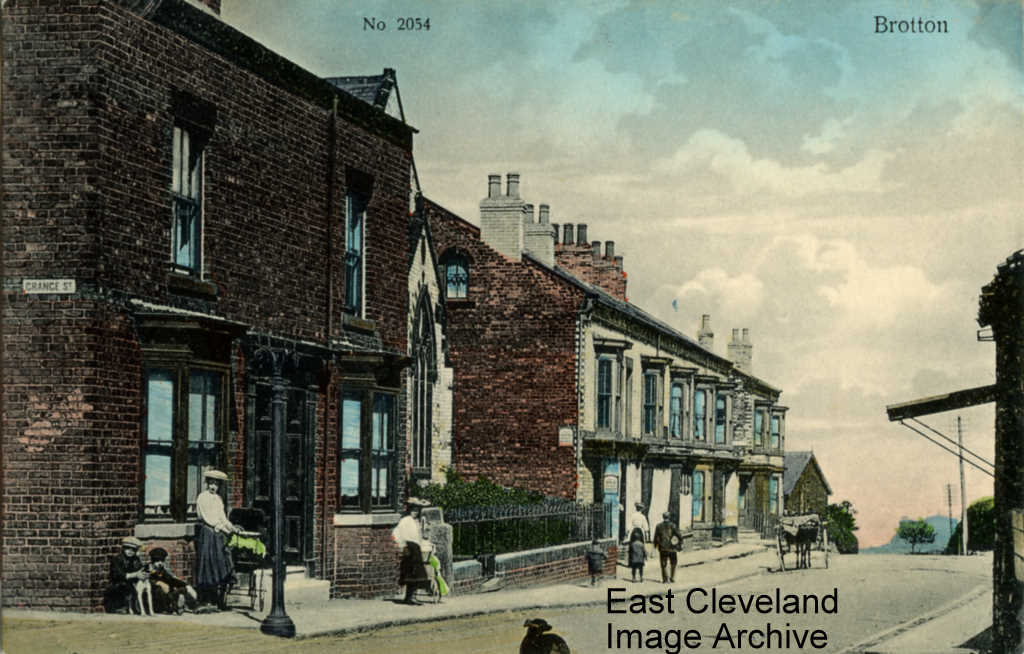 This view of the top of Brotton is radically different today, coming from a collection of postcards dating from early in the last century. The terrace beyond the chapel have gone now, although Chapel Street is still there; the gable end of the old Cottage Hospital can be seen at the end of the terrace. This card was posted on 28th December, 1908, to Loftus and is another of the ’Phoenix Series’ produced by Brittain & Wright of Stockton. Image courtesy of Beryl Morris and John G. Hannah. 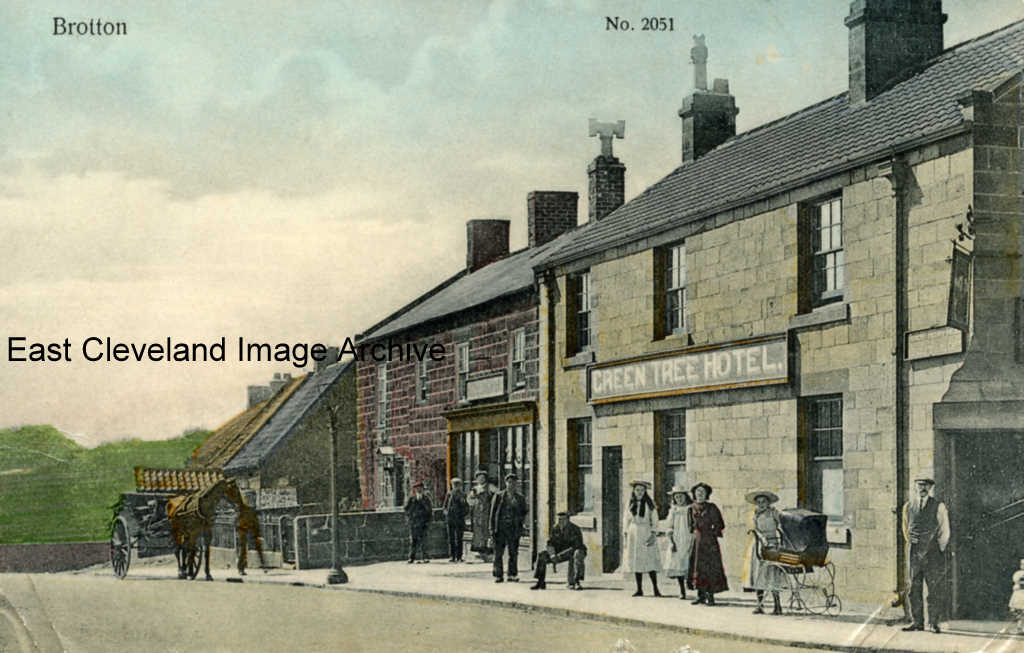 This picture postcard of the Green Tree; from the ’Phoenix Series’ by Brittain & Wright was posted to Beverley in 1912. Alan Dunn has advised: “There is a photograph of Green Tree with at thatched roof at Kirkleatham Museum; there s also a picture of my dad s cobbler s shop about four doors down from the Tree.” Interestingly the Archive now has an image of the Green Tree with thatched roof and features on another post on the Archive “Old Green Tree Hotel, Brotton”. Image courtesy of Beryl Morris, thanks to Alan Dunn for the update. 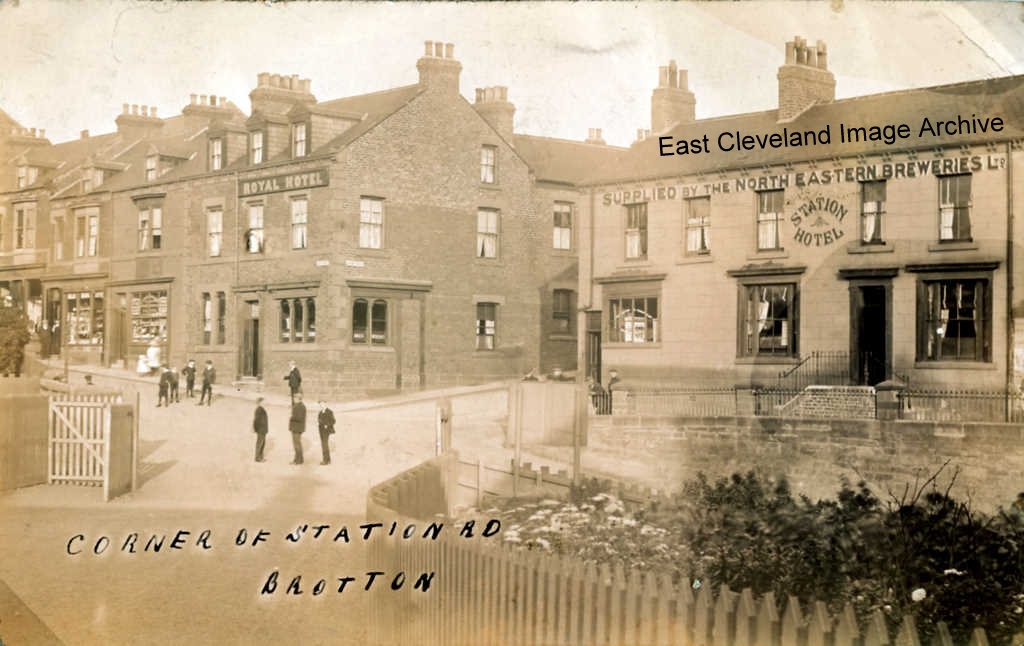 A view from Brotton Railway Station (now more familiar as ‘Tyre City’; looking across to the Station Hotel and Royal Hotel from a postcard postmarked 22nd November, 1907. Image courtesy of Beryl Morris.
Julie Riddiough has kindly sent us a set of photographs that she took from the top end of Brotton just last month, in the afternoon of 27th August. This is a view over the golf course to the remains of the Huntcliffe mine, Guibal fan house, beside the railway at the top of the cliff. ”The Huntcliff Ironstone Mine, a drift mine, commenced operations in 1872 by which time ventilation techniques had become more sophisticated. Worked on the pillar and bord system, this mine was one of several to be ventilated by a Guibal fan, named after its Belgian inventor. A vertical shaft was driven down to the mining level at the top of which the fan house was erected. A huge 30 foot ( 9 m) diameter fan powered by a static steam engine drew the foul air up the shaft and then up a specially designed chimney to the open air. Once in operation fresh air would be drawn into the mine through the drift entrances and could be controlled and directed by a series of shutters or doors usually operated by young boys.” Image courtesy of Julie Riddiough; additional information courtesy of ”Coast Alive”. |
||
Recent Comments